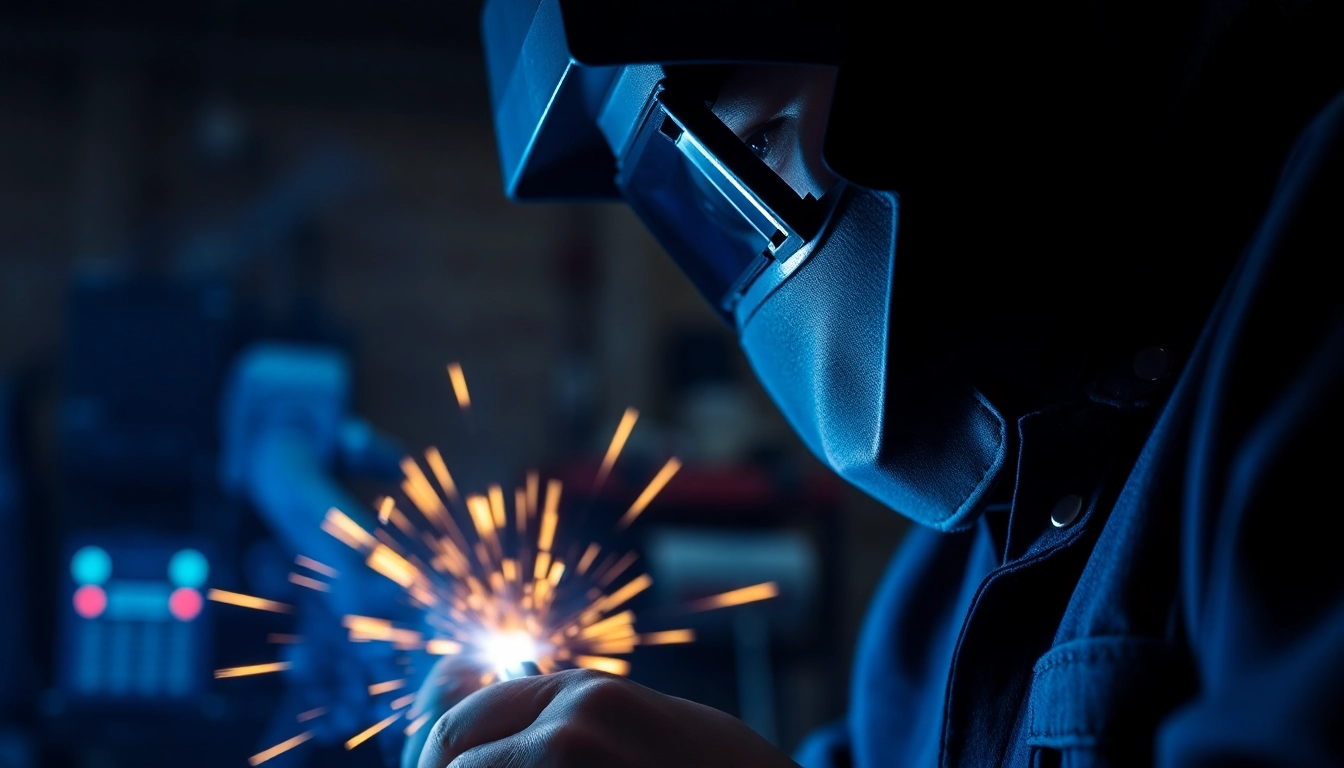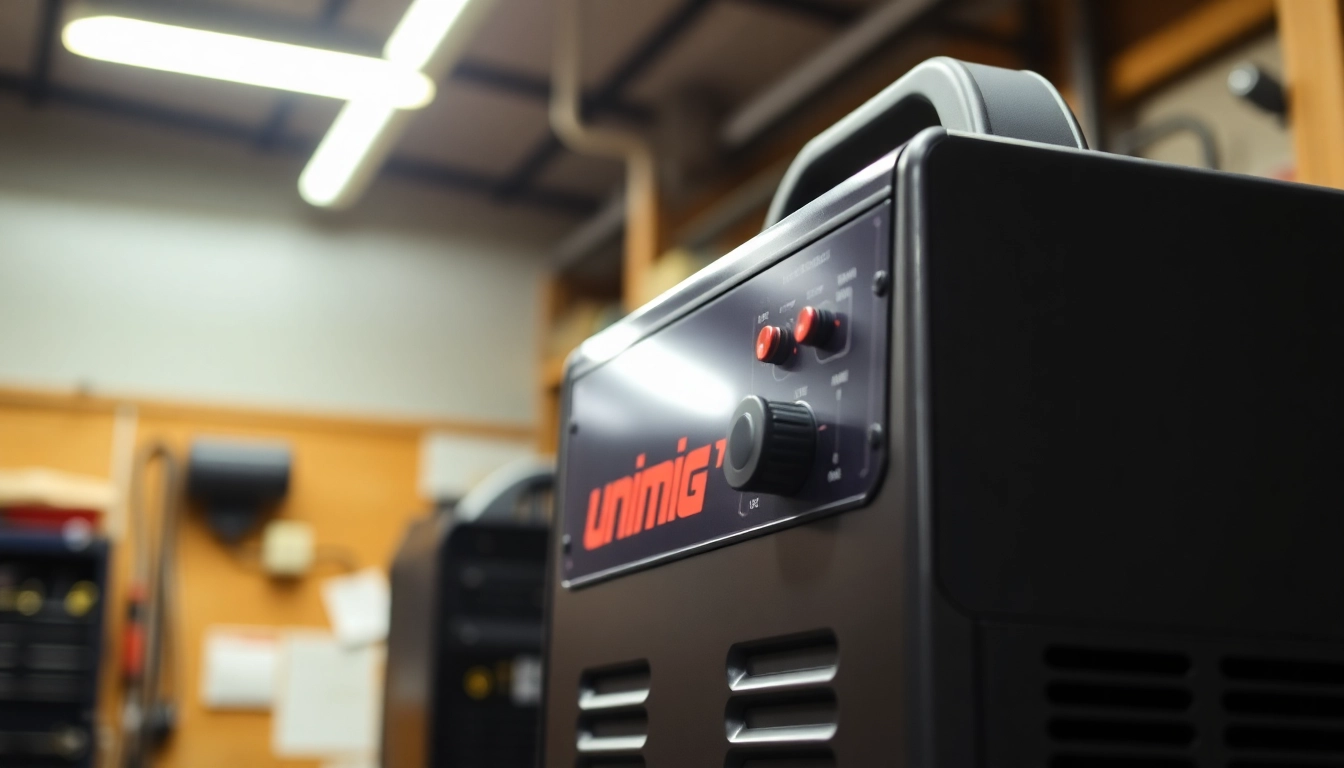Understanding AC DC TIG Welders
What is an AC DC TIG welder?
An ac dc tig welder is a versatile welding machine that can utilize both alternating current (AC) and direct current (DC) to perform the tungsten inert gas (TIG) welding process. While traditional welding methods may be limited to a single type of current, AC/DC TIG welders provide the flexibility to work with a range of metals and welding applications. This flexibility is made possible by the welder’s ability to switch between AC and DC modes, allowing for optimized welding performance based on the specific needs of the project at hand.
Advantages of AC DC welding technology
AC DC welding technology offers numerous advantages that make it a preferred choice among professionals and hobbyists alike. Here are some key benefits:
- Versatility: With the ability to weld a variety of materials including aluminum, stainless steel, and carbon steel, AC/DC TIG welders are ideal for diverse applications.
- Superior control: The precision offered by TIG welding makes it easier to manipulate and control the weld pool, leading to high-quality welds.
- Minimized distortion: The TIG welding process produces less heat than other methods, reducing the risk of warping or distortion in the materials being welded.
- Enhanced cleaning action: The AC mode provides a cleaning cycle that effectively removes oxides from aluminum, ensuring a clean weld.
Applications of AC DC TIG welders
The applications for AC/DC TIG welders are vast, spanning various fields and industries. Some of the key areas include:
- Aerospace: Precision welding of light alloys and other materials used in aircraft construction is critical for safety and performance.
- Automotive: Custom exhaust systems, fuel cells, and chassis components often require the precision that TIG welds provide.
- Art and sculpture: Artists and craftsmen utilize TIG welders for their ability to create fine details in metal sculptures.
- Manufacturing: Many industries rely on TIG welding for assembling components that require high-quality and robust welds.
Key Features of AC DC TIG Welders
Control settings and adjustability
One of the standout features of AC/DC TIG welders is their control settings. These machines often come equipped with adjustable parameters for both amperage and voltage, allowing welders to tailor their settings to the specific requirements of each job. Variable settings can include:
- Amperage control: Adjusting amperage allows for better control of the heat applied, crucial for different materials and thicknesses.
- Pulse settings: Many advanced models feature pulse controls that can help reduce heat input and improve weld quality.
- AC balance settings: This feature allows the welder to adjust the cleaning action on aluminum, optimizing the weld surface.
- Post-flow timer: This setting controls the amount of inert gas that continues to flow after the welding arc is terminated, extinguishing the arc safely and preventing oxidation.
Power efficiency ratings
When selecting an AC/DC TIG welder, power efficiency is a key consideration. Many modern welders feature inverter technology, which considerably increases energy efficiency by converting the input electricity into a stable output. This technology offers several advantages:
- Lower energy consumption: Inverter-based welders use up to 30% less electricity than traditional transformer machines.
- Lightweight and portable: Inverters are often more compact and lighter, making them easier to transport to job sites.
- Improved duty cycle: Higher efficiency allows for longer operating periods without overheating, contributing to better performance in extended projects.
Durability and build quality
The durability and construction quality of an AC/DC TIG welder can significantly impact its performance and lifespan. Look for welders that come with the following features:
- Robust casing: Many well-made welders utilize aluminum or high-quality plastic to protect internal components from damage.
- Cooling systems: Efficient cooling systems can prevent overheating during intense welding tasks, thereby extending the lifespan of the machine.
- Quality components: Renowned brands often use high-grade materials and components, which can further bolster durability. Examples include heavy-duty torches and reliable connectors.
How to Choose the Right AC DC TIG Welder
Identifying your welding needs
Selecting the right AC/DC TIG welder starts with understanding your specific welding needs. Consider the following:
- Material types: Identify the materials you’re most likely to weld, such as aluminum, stainless steel, or other alloys.
- Welding thickness: Determine the thickness of materials you will be working with to ensure the welder can deliver the necessary amperage.
- Frequency of use: If you plan to use the welder frequently or for long hours, prioritize models with higher duty cycles.
- Skill level: Newer welders may benefit from machines with user-friendly features, such as automatic settings and digital displays.
Budget considerations for purchasing
Your budget will significantly influence your choice of an AC/DC TIG welder. Here are important points to consider:
- Price range: Understand the general price range for the features you need. Basic models can start under $1,000, while high-end machines can exceed $3,000.
- Long-term investment: While lower-cost options may seem attractive, investing in a quality welder can save you money in the long run due to durability and efficiency.
- Maintenance costs: Factor in potential maintenance expenses and consumables like tungsten, filler rod, and replacement parts, which can accumulate over time.
Comparing brands and models of AC DC TIG welders
When it comes to choosing a brand, some manufacturers have established a solid reputation in the welding industry:
- Miller Electric: Known for their durable and reliable welders, Miller offers a broad range of TIG products suitable for both beginners and professionals.
- Lincoln Electric: With a strong focus on innovation, Lincoln’s offerings include advanced features and excellent performance for various industrial applications.
- Everlast: Often recognized for their cost-effective yet high-quality options, Everlast welders are widely appreciated by hobbyists and small businesses.
- PrimeWeld: Emerging as a strong competitor, their models often incorporate modern technology at competitive prices.
Reading online reviews and consulting community forums can also provide insight into user experiences and insights on specific models.
Tips for Using Your AC DC TIG Welder Effectively
Safety precautions when welding
These safety precautions are essential for minimizing risks while using an AC/DC TIG welder:
- Wear protective gear: Always wear protective clothing, gloves, and a welding helmet with appropriate shade to prevent exposure to UV and infrared radiation.
- Maintain a clean work environment: Remove flammable materials from the workspace to minimize fire hazards.
- Check equipment: Regularly inspect the welder and torch for any signs of wear or malfunction before starting a project.
- Ventilation: Ensure proper ventilation is in place to minimize the inhalation of harmful fumes.
Best practices for maintaining your welder
To keep your AC/DC TIG welder in peak condition, follow these maintenance best practices:
- Keep it clean: Regularly remove dust and debris from the welder’s surface and internal components using a soft cloth or compressed air.
- Replace consumables: Regularly check and replace items such as tungsten electrodes and contact tips to ensure optimal welding performance.
- Check electrical connections: Ensure all electrical connections are secure, clean, and corrosion-free to maintain a good electrical supply.
- Store properly: Keep the welder in a dry, cool environment to prevent rust and moisture accumulation.
Common mistakes to avoid while welding
Being aware of common welding mistakes can enhance the quality of your welds:
- Poor electrode preparation: Using improperly prepared tungsten electrodes can lead to erratic arc performance and poor weld quality.
- Incorrect gas flow: Adequate gas flow is critical; too low can invite contamination, while too high can cause turbulence and inclusions.
- Lack of proper fit-up: Ensure seamless alignment of materials before welding to avoid distortion and gaps in the weld.
- Neglecting the heat affected zone: Overheating or rapid cooling can lead to undesirable metallurgical changes in the weld area.
Future Trends in AC DC TIG Welding Technology
Innovations in welder technology
As welding technology continues to evolve, several innovative trends have emerged in AC/DC TIG welding:
- Smart welders: Integration of IoT (Internet of Things) technology allows users to monitor and control their welders remotely using mobile devices.
- Advanced arc stability: Newer machines are equipped with improved feedback systems that maintain consistent arc stability across a range of settings and conditions.
- Lightweight materials: Future models are being constructed with lighter, more durable materials to reduce fatigue and improve portability without sacrificing strength.
Eco-friendly welding solutions
Sustainability is becoming increasingly important in welding technology. Some eco-friendly trends include:
- Energy-efficient machines: New models prioritize energy efficiency without compromising performance, thus reducing the carbon footprint of welding operations.
- Use of non-toxic gases: Manufacturers are exploring alternatives to traditional shielding gases that pose minimal environmental impact.
- Recyclable materials: Development of machines constructed from recyclable materials promotes a more sustainable manufacturing process.
Predictions for the welding equipment market
Looking ahead, the welding equipment market is expected to experience unique trends, including:
- Increased demand for automation: The rise of automation in manufacturing includes robotic welding systems that can perform TIG welding tasks with minimal human intervention.
- Growth in training and educational programs: As demand for skilled welders rises, investment in training programs will likely expand in both vocational and academic settings.
- Diversification of applications: As industries evolve, there will be new opportunities for AC/DC TIG welders in areas such as renewable energy, electronics, and more.



